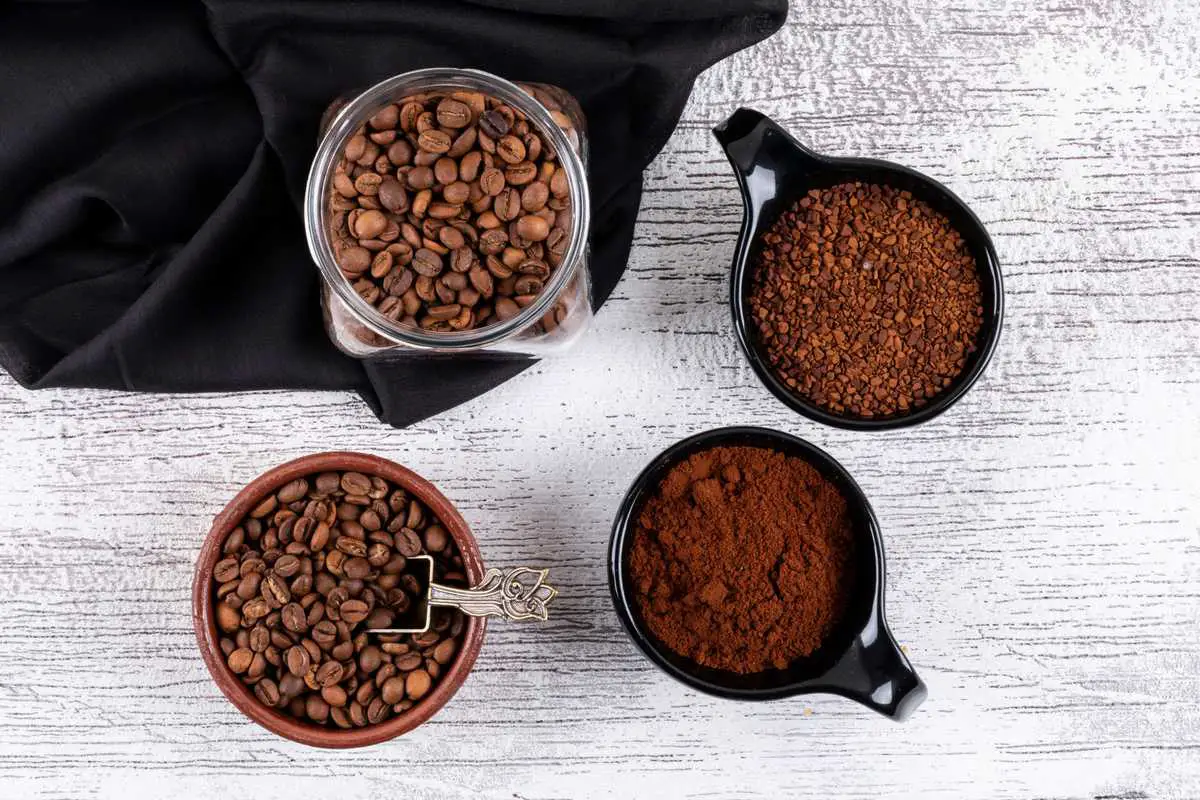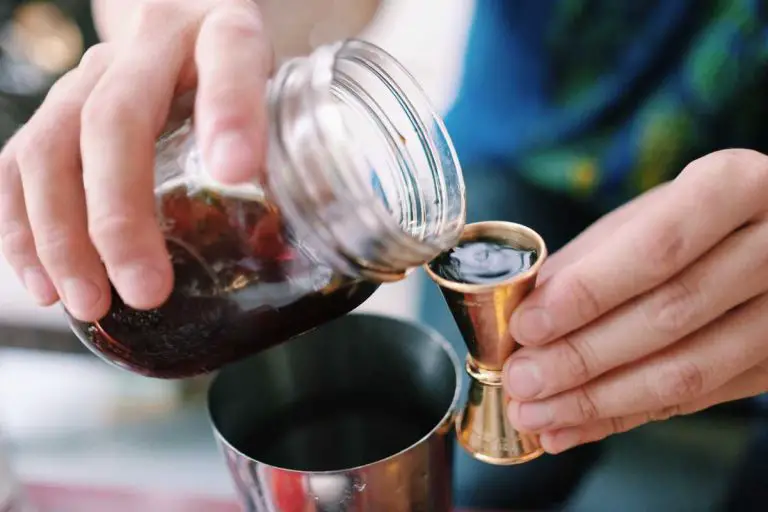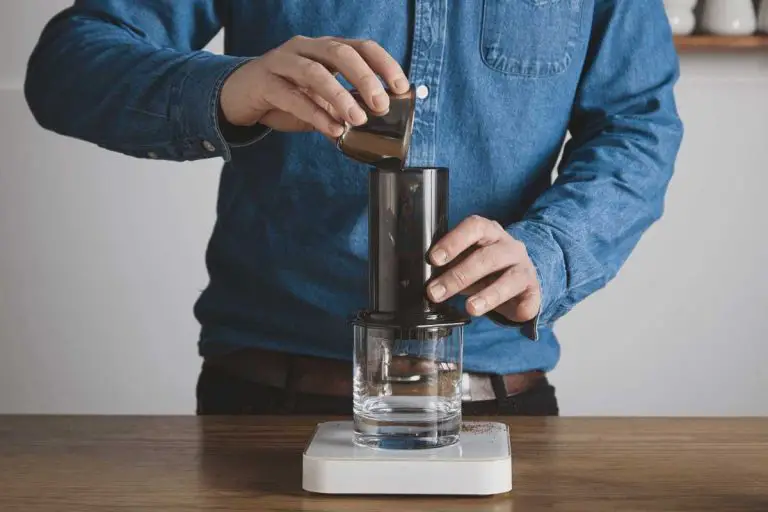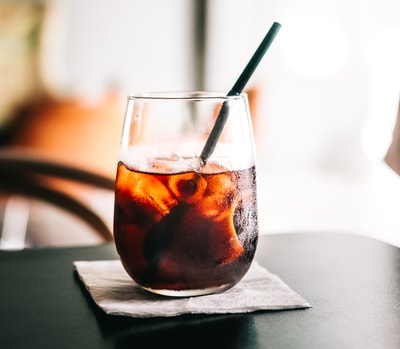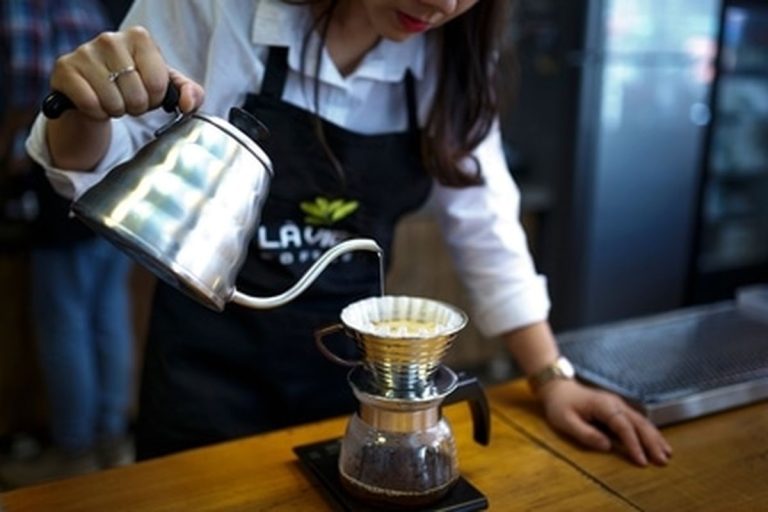Which Coffee Is Most Bitter? (Guide to Sweeter Coffee)
Are you looking to avoid the bitterness in coffee? For most people, bitterness is a natural element of coffee, which is why we automatically reach for the sugar. But which coffee is most bitter and why?
Darkly roasted coffee is the most bitter due to the break down of chlorogenic acid lactones into phenylindanes during the roasting process. Phenylindanes produce harsh-tasting, bitter flavours. When roasted, the robusta variety of coffee bean has higher levels of phenylindanes than arabica and is, therefore, more bitter.
That all sounded a little complicated. Keep reading for a simple explanation as to why most coffee is bitter and how you can enjoy better quality, bitter-free coffee.
Three factors that influence bitterness
- Roast type
- Coffee variety
- Preparation method
Roast type
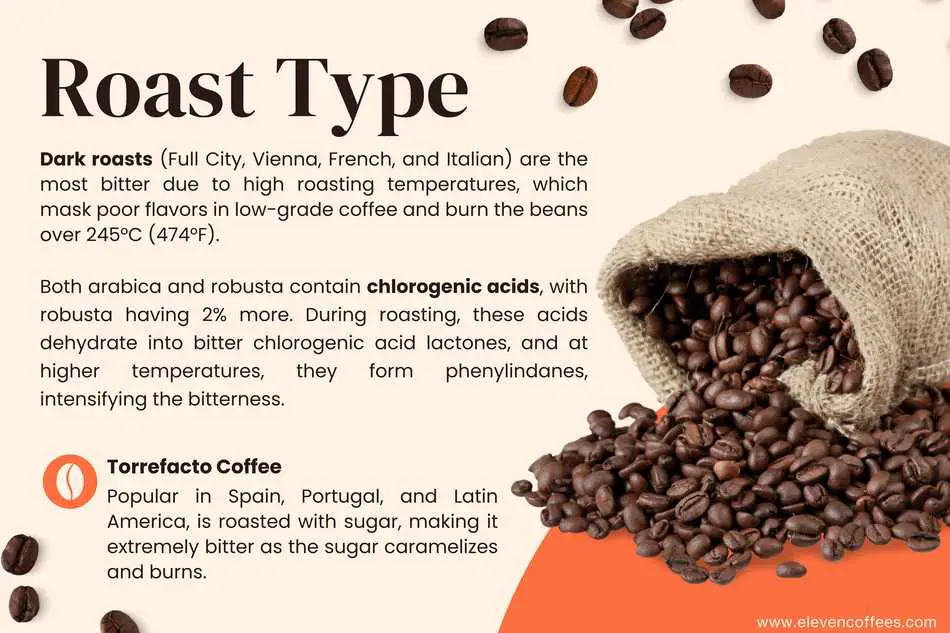
The most bitter coffees are ones which have been darkly roasted. Coffees are roasted darkly to obscure the poor flavours found in low-grade coffee.
Whilst most countries only use the terms light, medium and dark roasts, coffee roasters in the US use more detailed terms to communicate roasting profiles. The most bitter coffees will have been roasted darkly, and these dark roasting profiles are referred to as:
- Full city roast
- Vienna roast
- French roast
- Italian roast
The darker the roast, the more bitter the coffee will taste. This is because of the high temperatures used to roast the coffee and its resulting effect on the bean.
Coffee roasted to over 245°C (474°F) loses its brown colour and starts to turn black. This is because the coffee is burning, and burning results in a bitter taste.
French- and Italian-roast coffees are roasted at such high temperatures that the natural lipids (oils) inside the coffee beans actually come to the surface of the bean. If the roasting was to go on any longer, the beans would actually go up in flames.
Both arabica and robusta contain caffeic and quinic acid, known as chlorogenic acids. Robusta contains two percent more chlorogenic acids than arabica.
Although chlorogenic acids are not bitter, the roasting process dehydrates them and breaks them down into bitter chlorogenic acid lactones.
If roasting is carried out to high enough temperatures, as found in darkly roasted coffees, these chlorogenic acid lactones break down further into phenylindanes. Phenylindanes are what produce the harsh, bitter taste found in darkly roasted coffee.
Torrefacto coffee
Not commonly found in the UK or US but popular in countries such as Spain, Portugal and several Latin American countries, torrefacto coffee is coffee beans that are roasted with sugar and combined in varying degrees with traditionally roasted coffee.
The percentage of torrefacto coffee mixed with traditionally roasted coffee varies by roaster. This is done to reduce cost as the cheap cost of sugar adds bulk to the roasted coffee beans.
The result of roasting coffee with sugar is an incredibly bitter-tasting coffee as the sugar caramelizes and burns.
Coffee variety
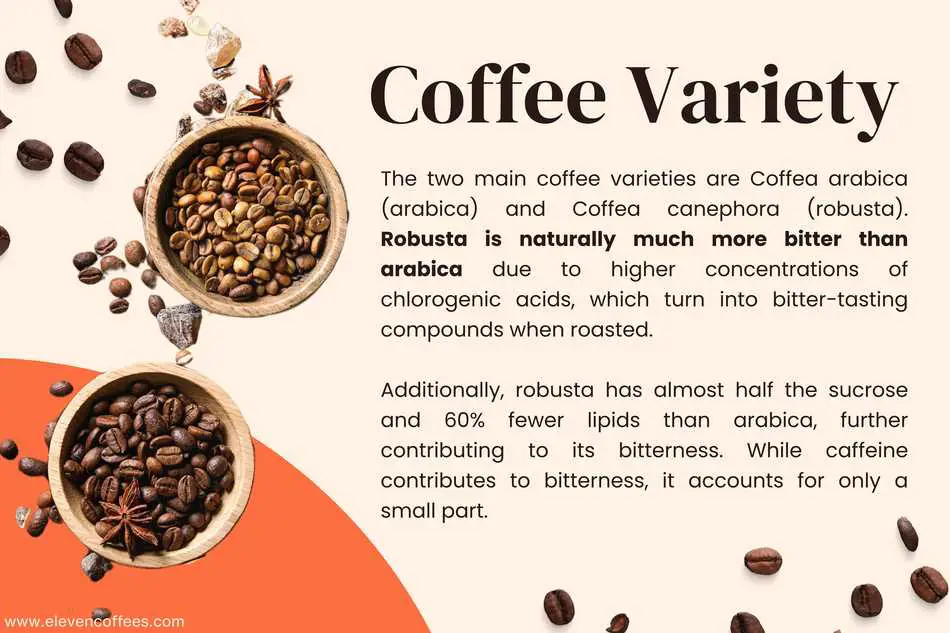
There are two main varieties of coffee: Coffea arabica and Coffea canephora, better known as arabica and robusta, respectively. All coffees contain bitter compounds; however, robusta is naturally far more bitter than arabica.
The reason for robusta’s increased bitterness is due to higher concentrations of chlorogenic acid which turn into bitter-tasting chlorogenic acid lactones when roasted.
The bitterness is also due to robusta containing almost half the amount of sucrose (sugar) that arabica has, and robusta also contains 60% fewer lipids (fats) than arabica coffee.
Caffeine often takes the blame for producing the bitterness in coffee; however, caffeine is responsible for just a fraction of coffee’s bitterness.
Robusta is found in cheaper ground and whole-bean coffee and is also used heavily in jars of instant and coffee pods for automatic machines. This is because it’s easier to grow and thus cheaper to produce on a vast scale to satiate the world’s coffee drinking habits.
Preparation method
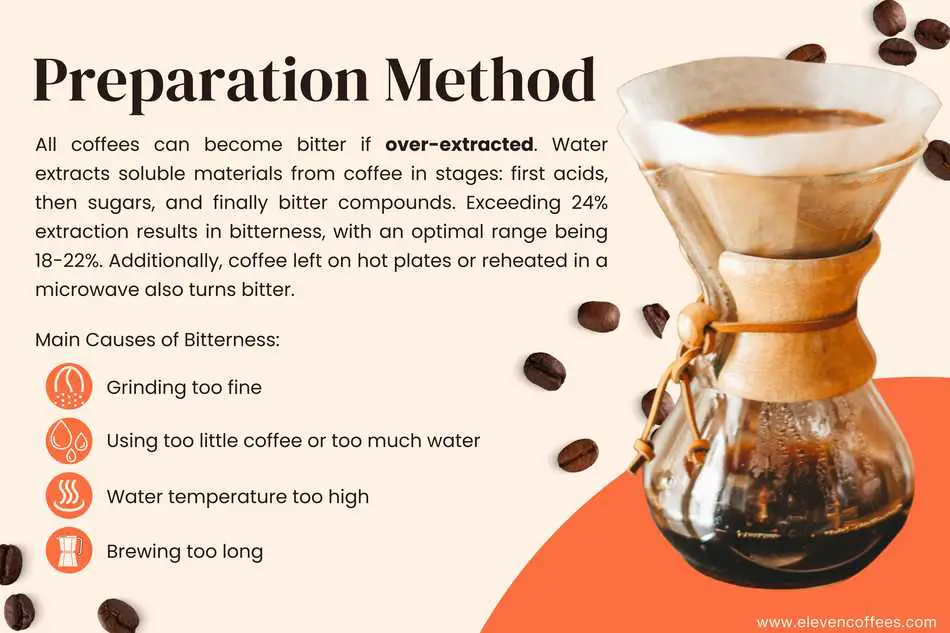
All coffees, no matter their quality, will become bitter if they’re allowed to over-extract. When coffee is combined with water, the water acts as a solvent extracting the soluble material. Around 30 percent of a coffee bean is soluble.
The first stage of extraction is of the natural acids. The second stage is extraction of the natural sugars. The third stage is when the extraction of the bitter compounds occurs.
Depending heavily on grind quality, extraction of more than around 24 percent of the soluble material will result in bitterness. Until recently, the most preferred extraction was between 18 – 22 percent and is still true for coffee ground in most coffee grinders.
Coffee that is allowed to reach extraction of the bitter compounds will, of course, be bitter. How quickly you reach the bitter compounds depends on your brewing and grinding method. The main causes of bitterness are (or a combination of):
- Grinding too fine
- Too little coffee/too much water
- Water is too hot
- Brewing too long
The perfect storm, if you like, for these culprits would be to make a ristretto or espresso coffee. Ristretto and espresso are concentrated cups of coffee that use a coffee to water ratio of around 1:1 – 1:2.5.
At such extremely high coffee to water ratios, all the inherent characteristics of the coffee are magnified. If allowed to over-extract, the resulting brew will be intensely bitter.
Another cause of bitterness is coffee that sits on a hot plate, or coffee that is reheated in the microwave.
How do you stop coffee from being bitter?
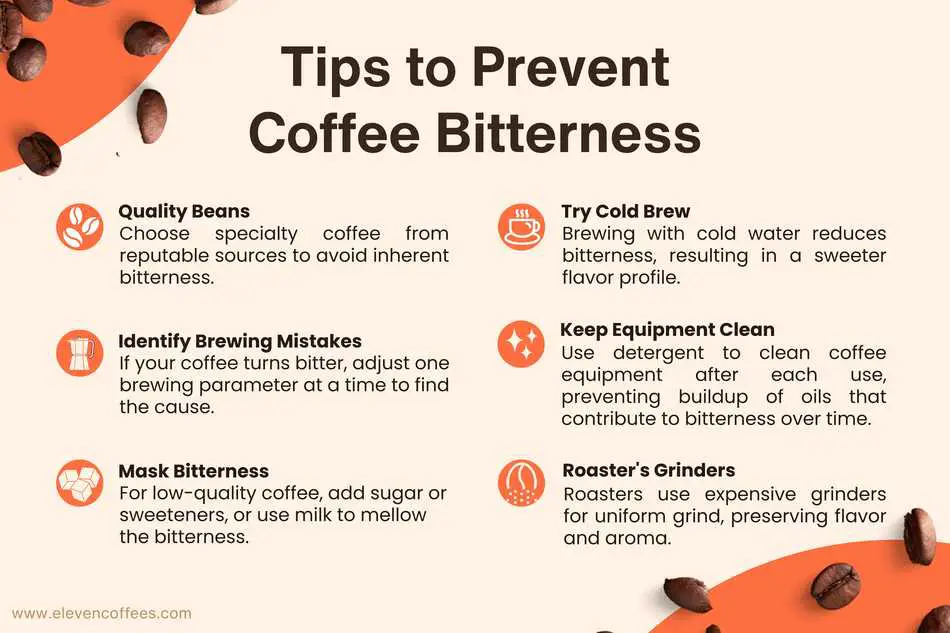
The main way to enjoy bitter-free coffee is to buy good-quality specialty coffee either online or from a local roaster. But as we’ve seen, even good quality coffee can become bitter through user-error.
If you’ve over-extracted your coffee and it’s become bitter, look to identify the cause by changing one brewing parameter at a time. Changing multiple parameters at once won’t enable you to identify the cause.
If you buy bad coffee, the only real way to get rid of its bitter taste is to add lots of sugar or sweetener. You can lessen the bitterness by adding milk, too.
Another option is making cold brew coffee. Water needs to be hot in order to extract the bitter compounds naturally found in coffee. By brewing ground coffee with cold water, the result is a much sweeter brew because there’s less bitterness.
To make cold brew
- Combine one part medium-ground coffee to eight parts water.
- Leave from anywhere between 12 – 24 hours.
- Filter using a metal filter (such as in a French press or AeroPress), by cloth, or use a paper filter (such as in a Clever Dripper).
Clean your equipment to reduce bitterness. Make sure to keep your coffee equipment clean using washing up detergent after every use.
Rinsing is not enough as it doesn’t get rid of the coffee oils which build-up over time, resulting in more bitterness. Check out my guide on how to clean every type of coffee maker.
Is good coffee bitter too?

Properly brewed specialty coffee isn’t noticeably bitter, but it does contain a bitter element. Bittnerness is an aspect of roasted coffee’s inherent qualities, but it’s balanced out by its natural acidity and sweetness.
All roasted coffee contains bitter chlorogenic acid lactones. It’s an inevitable result of the roasting process as unroasted coffee beans contain chlorogenic acid which breaks down into chlorogenic acid lactones.
Lightly or medium roasted coffee contains varying levels of chlorogenic acid lactones, but they’re hardly noticeable with good roasting technique.
Bitterness is an ugly word in the specialty coffee industry and few dare to mention it. Bitterness is mostly viewed as a negative; however, many foods naturally contain bitter compounds and are, of course, delicious.
However, the resulting bitterness in coffee through over-extraction causes the coffee to lose its clarity, with the flavours becoming muddled.
If you want to buy bitter coffee
If you enjoy the bitterness in coffee, then look for cheaper packs of darkly roasted coffee or a high-percentage torrefacto coffee.
Packs of coffee are unlikely to tell you that they contain robusta coffee as it’s considered an inferior product. Therefore, if the packet doesn’t mention arabica (or one of its varietals), you can safely assume it contains low-grade robusta. Perfect for a bitter brew.

